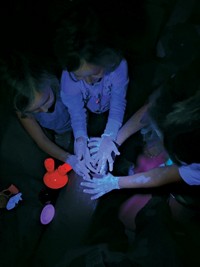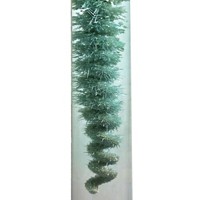Advertisement
Grab your lab coat. Let's get started
Welcome!
Welcome!
Create an account below to get 6 C&EN articles per month, receive newsletters and more - all free.
It seems this is your first time logging in online. Please enter the following information to continue.
As an ACS member you automatically get access to this site. All we need is few more details to create your reading experience.
Not you? Sign in with a different account.
Not you? Sign in with a different account.
ERROR 1
ERROR 1
ERROR 2
ERROR 2
ERROR 2
ERROR 2
ERROR 2
Password and Confirm password must match.
If you have an ACS member number, please enter it here so we can link this account to your membership. (optional)
ERROR 2
ACS values your privacy. By submitting your information, you are gaining access to C&EN and subscribing to our weekly newsletter. We use the information you provide to make your reading experience better, and we will never sell your data to third party members.
K-12 Education
Newscripts
Kid chemistry revisited: Electroplating and simulated germs
by Craig Bettenhausen
January 31, 2021
| A version of this story appeared in
Volume 99, Issue 4
More kid-friendly home science

In December, Newscripts wrote about next-level experiments that science-minded caregivers could do to supplement kids’ virtual classrooms. It was a lot of fun, and many readers wrote in with suggestions. So we decided to revisit the subject with two new activities and more expert advice.
We couldn’t resist the allure of at-home electroplating. An internet search for “DIY nickel electroplating” should provide all the details needed to get started. Nickel is a great choice for electroplating because it requires just vinegar, salt, a cheap variable DC charger, and a few simple parts, all available from common online retailers.
For our setup, we swapped out the end of the charger’s cable for two alligator clips and attached those to two electrodes made from bars of pure nickel, which we hung on either end of a 250 mL beaker filled with household vinegar. About 10 g of salt helped the solution conduct electricity. We turned on the power at 12 V and left it for about 2 h to charge the solution with green nickel acetate.
Then we swapped out the electrode that bubbled, which is the cathode, for a brass plumbing elbow we had cleaned and degreased with ammonia. In about 30 min, with the voltage down at around 3.5 V—a lower driving force leads to a more uniform coating—the part was coated in a tough, shiny layer of metallic nickel.
This experiment provided many opportunities to talk about science. Hydrogen bubbles streaming off electrodes led to a discussion of water splitting; a corroded anode along with new metal appearing on the cathodes spurred a conversation about electron flow, ionizations, and other redox chemistry; and color changes showed the kids one way color arises from chemistry. And at the end, we had an artifact: a brass part now colored a shiny silver, which our junior scientists ran off with to explain to anyone who would listen.
Jeanita Pritchett (see page 26), the founder of STEAM Forward! Academy—a company that puts on science workshops and courses for school-age kids—recommends that caregivers at home look for experiments and demonstrations that bring out the science behind everyday objects. “When kids see it and think it’s relatable, they’re going to start looking for the scientific aspects that exist all around them,” she tells Newscripts.
Pritchett suggests that caregivers carefully vet their sources for procedures, safety, and explanations. She says to look for a large number of followers on social media, a long history with science education, and the backing of reputable publishers or scientific organizations. When sources contradict each other in a particular area, that’s a place to devote extra time to research and analysis.

For our second experiment, we used a hand lotion spiked with Glo Germ fluorescent dye to simulate the spread of germs. We grabbed the kids while they played indoors, had each of them apply an earbud-sized dollop of lotion to their hands, and released them.
After 5 min, we turned off the lights and turned on an LED blacklight. Gasps and shrieks of “ewwww!” filled the room. Splotches of bluish glow were on the light switch, the couch, the dolls, the carpet, and their faces, with plenty still on each hand.
Next, the kids washed their hands. Then we switched the blacklight on again to find hands still glowing green, especially between their fingers and around their fingernails. And then we asked a timely question: “What if that was coronavirus instead of glowing green dye? Want to wash your hands again?”
Please send comments and suggestions to newscripts@acs.org.
Want more?
Newscripts readers suggested several sources for supplementary science activities. We haven’t tried them all yet, but we thought we’d share the links with you:
Science Buddies: Hands-on science resources for home and school
Steve Spangler Science: Fun stem toys, science experiments, and hands-on activities
Young Chefs: From Cooking to Science
American Chemical Society: Adventures in Chemistry (ACS publishes C&EN)




Join the conversation
Contact the reporter
Submit a Letter to the Editor for publication
Engage with us on Twitter